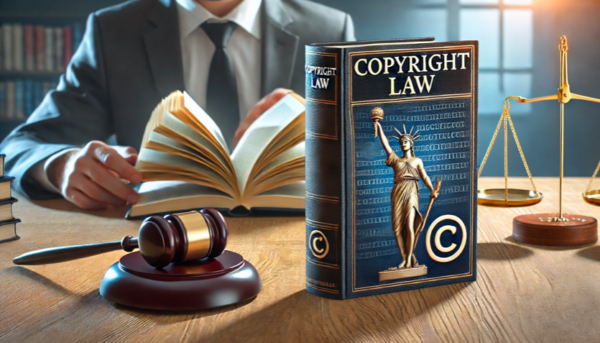As if writing a book isn’t using enough of our brain power, the legal side of things can add a spanner to the works. When diving into the world of intellectual property (IP), you’ll quickly encounter the terms “exclusive” and “non-exclusive” licenses. Understanding these concepts is crucial for anyone looking to protect and monetize their creations, whether you’re an author, inventor, or entrepreneur. In this article, we’ll explore the differences between these two types of licenses, their pros and cons, and how choosing the right one can impact your business or creative work.
Exclusive vs. Non-Exclusive Licenses: What’s the Big Deal?
Licensing your intellectual property allows others to use it while you retain ownership. However, not all licenses are created equal. The key difference between an exclusive license agreement and a non exclusive license agreement lies in the level of control and rights you grant to others.
Exclusive licenses grant the licensee sole rights to use the IP, meaning no one else, not even the licensor, can use it during the term of the license. On the other hand, non-exclusive licenses allow the licensor to grant the same rights to multiple parties, meaning several licensees can use the IP simultaneously.
Choosing between these options is more than just a legal decision—it’s a strategic one. Let’s dive deeper into each type to see what they offer.
Exclusive Licenses: The All-In Approach
An exclusive license agreement gives the licensee the sole right to use your IP. This can be highly attractive if you’re looking for a partnership where the licensee is heavily invested in your product or service. Because they hold exclusive rights, they’re more likely to dedicate resources to promoting, developing, and commercializing the IP.
Pros of Exclusive Licenses:
- Greater Control: The exclusive licensee has full control over the IP’s use, allowing for consistent branding and strategy.
- Higher Revenue Potential: With no competition from other licensees, they can often charge a premium for products or services developed from the IP.
- Stronger Market Position: Exclusive rights can create a significant competitive advantage, making the licensee the sole player in a particular market.
Cons of Exclusive Licenses:
1. Higher Costs: Securing exclusive rights often comes with a higher price tag. The licensee may need to pay more upfront or through royalties.
2. Risk of Underutilization: If the licensee doesn’t fully exploit the IP, the licensor might miss out on potential revenue.
3. Limited Revenue Streams: The licensor forfeits the opportunity to license the IP to other parties, which could limit overall revenue.
When to Consider an Exclusive License:
If your IP is unique, with the potential for significant market impact, and you want a committed partner, an exclusive license might be the way to go. It’s particularly effective in industries where market exclusivity can lead to a dominant position, such as pharmaceuticals or technology.
Non-Exclusive Licenses: Flexibility and Broad Reach
A non exclusive license agreement allows you to grant the same rights to multiple licensees. This can be beneficial if your goal is widespread adoption and penetration in multiple markets.
Pros of Non-Exclusive Licenses:
1. Flexibility for the Licensor: You can license your IP to multiple entities, potentially opening up numerous revenue streams.
2. Lower Costs: Non-exclusive licenses are often less expensive to obtain, making them accessible to a broader range of licensees.
3. Wider Market Reach: By allowing multiple parties to use the IP, you can reach a broader audience, which might be beneficial for certain types of products or services.
Cons of Non-Exclusive Licenses:
1. Reduced Control: With multiple licensees, maintaining consistent quality and branding across different users can be challenging.
2. Increased Competition: Licensees may find themselves competing against each other, which could drive down prices and profitability.
3. Less Incentive for Investment: Without exclusivity, licensees might not be motivated to invest heavily in the IP’s development or marketing.
When to Consider a Non-Exclusive License:
If your primary goal is widespread adoption or you’re looking to maximize short-term revenue from multiple sources, a non-exclusive license might be the better option. This approach is common in software distribution, franchising, and certain creative industries.
Exclusive License Grants: The Commitment of Sole Rights
Exclusive licensing involves significant commitment. The licensor agrees not to use or license the IP to anyone else, often leading to a deeper partnership between the licensor and licensee. This can be highly beneficial when the licensee has the resources and expertise to bring the IP to market effectively.
What to Keep in Mind:
- Scope: Clearly define the scope of the exclusive rights. This includes the geographical area, duration, and specific uses of the IP.
- Licensor’s Role: While the licensee gains sole rights, the licensor may still play a role in ensuring the IP is used as intended, sometimes even participating in development or marketing efforts.
- Examples: Exclusive licenses are common in industries like pharmaceuticals, where a single company might hold the rights to produce and sell a particular drug.
Non-Exclusive License Grants: Sharing the Wealth
Non-exclusive licenses are less about exclusivity and more about reaching as many users as possible, allowing the licensor to tap into multiple markets simultaneously while managing intellectual property rights. This approach often leads to diversified income streams.
What to Keep in Mind:
- Multiple Licensees: Since the IP can be licensed to many, it’s essential to maintain clear communication and consistent terms across all agreements.
- Scope: Like exclusive licenses, it’s crucial to define the scope, but with the added complexity of managing multiple agreements.
- Examples: Non-exclusive licenses are prevalent in software, where developers license their products to various users, allowing for broader market penetration.
Practical Considerations: Choosing the Right License for Your Needs
When deciding between an exclusive and non-exclusive license, consider your long-term goals, market strategy, and the nature of your own intellectual property. If control and market positioning are paramount, an exclusive license might be the better choice. However, if flexibility and broad market reach are more critical, a non-exclusive license could offer the best return.
Also, remember the legal and tax implications. Licensing agreements can be complex, so consulting with a legal professional to ensure your interests are protected is always a good idea.
Choosing the Right Licensing for You
Understanding the differences between exclusive and non-exclusive licenses is vital for anyone managing intellectual property. Whether you’re looking for a committed partner through an exclusive license or aiming for widespread adoption with a non-exclusive one, the choice will significantly impact your business or creative project.
Ready to take the next step in your publishing journey? Spines simplifies the process, helping you navigate licensing, publishing, and distribution with ease. Gain the tools and support you need to bring your work to the world—on your terms.
Your Publishing Journey Awaits – Start NowFAQs
Q: What is the difference between exclusive and non-exclusive licenses?
An exclusive license meaning: granting sole rights to a single licensee, meaning no other party—including the original owner—can use the intellectual property (IP) during the license period. A non-exclusive license, on the other hand, allows multiple licensees to use the same IP simultaneously, providing broader distribution and flexibility.
Q: When should you choose an exclusive license over a non-exclusive one?
An exclusive license is ideal when:
- You want to partner with a committed licensee who will invest in developing and marketing the IP.
- Market exclusivity provides a competitive advantage (e.g., pharmaceuticals, and high-tech industries).
- You prefer controlled branding and strategy without multiple parties using the IP.
A non-exclusive license is preferable when:
- You want widespread adoption and multiple revenue streams.
- The IP benefits from mass distribution (e.g., software, educational materials).
- Flexibility and lower costs are more important than exclusivity.
Q: What are the pros and cons of exclusive licensing?
Pros:
✔ Greater control over branding and strategy.
✔ Higher revenue potential due to market exclusivity.
✔ Stronger competitive advantage, limiting competition.
Cons:
✖ Higher upfront costs for the licensee.
✖ Risk of underutilization if the licensee fails to commercialize the IP effectively.
✖ Limits revenue streams since the IP cannot be licensed to multiple parties.
Q: What are the pros and cons of non-exclusive licensing?
Pros:
✔ Increased flexibility—IP can be licensed to multiple parties.
✔ Lower costs for licensees, making it accessible to a wider audience.
✔ Wider market reach and multiple revenue streams.
Cons:
✖ Less control over branding and how the IP is used.
✖ Licensees may compete against each other, lowering profitability.
✖ Licensees might not invest as much in marketing or development since they don’t have exclusive rights.
Q: How does an exclusive license impact revenue potential?
An exclusive license can lead to higher revenue per deal because licensees are often willing to pay more for exclusivity. However, it can also limit total revenue if the IP could have been monetized through multiple licensing deals. If the exclusive licensee underperforms, the licensor may miss out on potential earnings.
Q: Does an exclusive license mean the licensor cannot use their own IP?
Yes, in most cases. When granting an exclusive license, the licensor typically cannot use the IP themselves or license it to others for the duration of the agreement. However, this depends on the contract terms—some exclusive licenses allow limited use by the original creator.
Q: What industries commonly use exclusive and non-exclusive licenses?
Exclusive Licenses:
- Pharmaceuticals – Drug companies often acquire exclusive rights to manufacture and sell new drugs.
- Technology – Patented inventions are often licensed exclusively to a single company.
- Publishing – Authors may grant exclusive publishing rights to a specific publisher.
- Non-Exclusive Licenses:
- Software – Programs are typically licensed non-exclusively to multiple users.
- Music & Art – Artists often allow multiple parties to use their work under non-exclusive agreements.
- Franchising – Some business models allow non-exclusive franchise agreements in different regions.
Q: What legal considerations should you keep in mind when choosing a license?
Scope – Define the geographical, industry, and usage limits of the license.
- Duration – Specify how long the license remains in effect.
- Payment Structure – Determine upfront fees, royalties, or revenue-sharing models.
- Termination Clauses – Include conditions for revoking the license if terms are violated.
- Enforcement – Ensure the agreement is legally enforceable and protects your IP rights.
Since licensing agreements can be complex, it’s always advisable to consult a legal professional to ensure your interests are protected.








